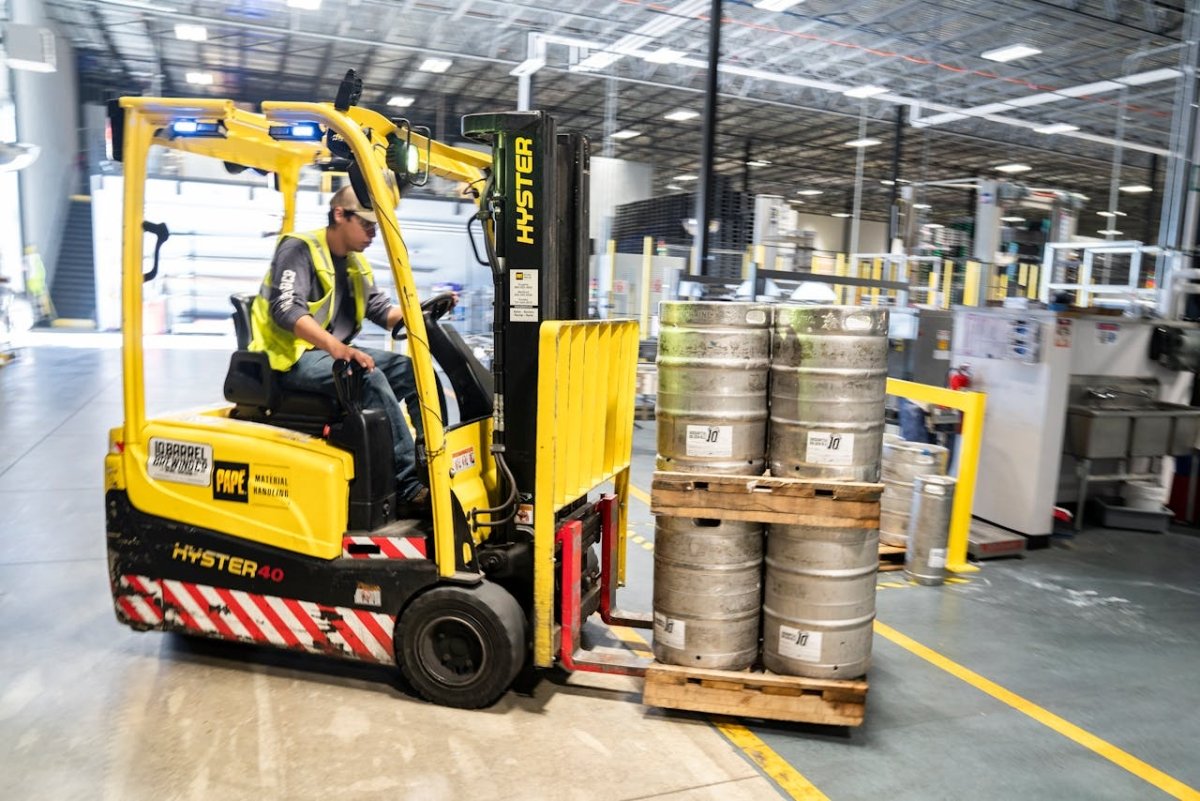Marine environments can be beautiful, but they bring plenty of safety challenges. Constant exposure to moisture, splash-back from waves, and the growth of algae create tough conditions for surfaces like boat decks, pontoons, and walkways. Whether you’re using a leisure craft or working aboard a commercial vessel, staying upright can be tricky when every step could lead to a slip.
Accidents around water can be more dangerous because there’s often limited space, moving surfaces, and harder access for emergency support. That’s why paying attention to surface grip isn’t just about comfort. It’s about reducing risks. Keeping walkways, steps, and ramps safe to move on is a key part of making marine life safer for everyone involved, from boaters and dock workers to families boarding a ferry.
Understanding Marine-Specific Slip Hazards
From the hull to the pier, many marine structures are exposed to water all the time. That constant wetness makes most surfaces naturally slippery. Then you've got other common traits of these areas like high foot traffic, metal or fibreglass flooring, salt build-up, and seaweed. Combine them and you've got an ideal recipe for slips and falls.
Here are some of the typical surfaces you’ll find along with the main problems they raise:
- Wooden docks and piers: Can become slimy or soft with prolonged water contact. Algae and mildew grow fast here in warmer months.
- Fibreglass or metal decks: Often found on boats. They tend to be smooth and offer little natural grip, especially when wet.
- Ladder treads and boat steps: Small areas where slips are more likely, especially when climbing aboard in bad weather.
- Floating pontoons: These move with the water, making balance harder even when dry.
It’s easy to think that regular cleaning might be enough. But over time, saltwater wears down the surface, and water-film layers return quickly even after mopping. That makes basic cleaning a short-term fix rather than a proper solution.
To lower the chance of accidents properly, something grippier and longer-lasting is needed. This becomes even more important during autumn and winter, when dampness lingers and conditions stay wet for days. One handy tool that works well across all seasons is non-slip tape, especially when designed for marine settings.
Benefits Of Non-Slip Tape In Marine Settings
Non-slip tape gives instant grip to most slippery surfaces without the need for large-scale fixes. Once applied, it helps people stay upright even when the floor is wet, uneven, or shifting underfoot. That’s why so many boat owners and dock managers turn to tape as a reliable go-to for improving safety.
There are a few standout benefits that make non-slip tape a good fit for marine areas:
- Quick to install: You don’t need special equipment to apply it, and it sticks to lots of surfaces including wood, metal, and fibreglass.
- High hold even in damp spaces: Marine-grade tape is made to stay put even when splashed with seawater or left in humid conditions.
- Tough enough for rough weather: The best versions of the tape are resistant to UV rays and strong winds, so they hold up season after season.
- Low maintenance: Once it’s down, it doesn’t need much attention beyond basic cleaning now and then.
- Customisable: Comes in different colours and widths, so you can make edges stand out or match the area’s look, depending on what you prefer.
For example, many people use black non-slip tape on deck borders and edges of swim platforms where water regularly collects. Others pick high-visibility strips for ladder rungs or ramp surfaces to help avoid missteps when loading or unloading near the water.
Using a targeted solution like this helps improve everyday safety without turning your boat or dock into a construction site. It makes things better for both experienced seafarers and nervous first-timers alike.
Choosing The Right Non-Slip Tape For Marine Use
Not all non-slip tapes are built for the challenges of marine environments. Moisture, sun exposure, and constant foot traffic can break down the adhesive or surface coating if the tape isn’t designed to handle them. That’s why picking the right kind matters just as much as using it in the first place.
When shopping for marine-grade tape, here’s what to look for:
- Water resistance: A must-have. Marine-rated tape is made to resist saltwater and fresh water without peeling or loosening.
- UV stability: Direct sunlight can wear out regular tape quickly. UV-resistant tape won’t fade or dry out as fast.
- Textured surface: The grit should be firm enough to grip shoes and bare feet without being too abrasive.
- Strong adhesive: Marine tape needs an adhesive that bonds well to smooth, sealed, or painted surfaces like metal or fibreglass.
- Size variety: Thicker widths are great for large deck areas, while narrow strips work better on steps and ladder rungs.
Think about the exact spot you need the tape for. A narrow walkway might need high-visibility strips to help people see where to step. Swim platforms, often used barefoot, require a softer grit. In contrast, loading zones or areas around winches might benefit from tape with extra grip strength.
Taking the time to match the tape to the location it’s going on helps make it last longer and perform better. It also helps ensure you're improving safety instead of creating new hazards. Always make sure surfaces are dry and clean before putting any strips down. That alone can keep the tape steady for months despite regular washing and exposure to salt spray.
Tips For Effective Application And Maintenance
Once you’ve chosen the right tape, getting it in place properly is the next step. Applying non-slip tape might feel easy, but it’s the prep beforehand that makes sure it lasts through wet seasons and heavy use.
Follow these steps for better results:
1. Clean the area well – Remove dirt, oil, sand, and salt deposits before starting. Any grime left behind will weaken the adhesive.
2. Dry the surface completely – Moisture under the tape keeps it from bonding, especially on fibreglass or painted metal.
3. Measure and mark – Plan where the strips will go. Keep uniform spacing and control curves or sharp edges.
4. Apply firm pressure – Press down from one end to the other with your hands or a roller to make sure each strip sticks tightly.
5. Seal the edges if needed – For areas with loads of spray or scrubbing, edge sealer helps stop water from lifting the tape.
Once it’s in place, maintenance becomes pretty straightforward. Give it a gentle brush down when cleaning the deck. Avoid using pressure washers directly on laminate tape edges. If the grip starts to wear out or edges lift, don’t ignore it. Peel off the damaged part and replace it to keep everything safe.
Keeping non-slip tape in top shape is less about high effort and more about consistency. Just a bit of regular attention like checking that water isn’t pooling around the edges or sweeping muck off now and then goes a long way.
Making Marine Safety A Priority
Slip safety isn’t just something to tick off a checklist. It’s really about thinking ahead and being prepared. On boats and docks, slippery conditions can pop up at any time, whether it’s a rainy day in October or morning dew in early spring. Reducing risks in these spaces creates steady footing, fewer mishaps, and less stress for whoever’s onboard or stepping ashore.
Adding non-slip tape where it’s needed is one of the simplest ways to strengthen that safety without changing how the boat or pier works. It doesn’t require big renovations, and when handled properly, it blends into the setup and holds up as the seasons shift. The key is using the right materials, installing them with care, and staying on top of condition checks.
Even with the perfect non-slip tape, sometimes the layout or nature of certain surfaces calls for something more tailored. That’s where working with a professional helps. They can look at the specific conditions and recommend a plan that suits your needs.
Steady Steps, Safer Decks
The sea might be unpredictable but your steps on deck don’t have to be. With the right non-slip tape in the right places, you cut down on the chance of slides and falls, especially in high-risk zones like ramps, steps, and edges. Safe footing means smoother sailing, both literally and for peace of mind.
Whether you manage a boat, dock, or floating platform, it makes sense to look at the surfaces people walk across every day. A small change like adding non-slip tape might not seem like much, but it's often all it takes to make a big impact. Being proactive now means fewer problems later and more confidence with every step near the water.
Make every step on board or along your dock safer with a simple yet reliable solution. Whether you're managing a marina or preparing your boat for the season, the added grip of non-slip tape can make all the difference. Explore Slips Away's trusted range today and keep your marine spaces steadier and more secure all year round.














